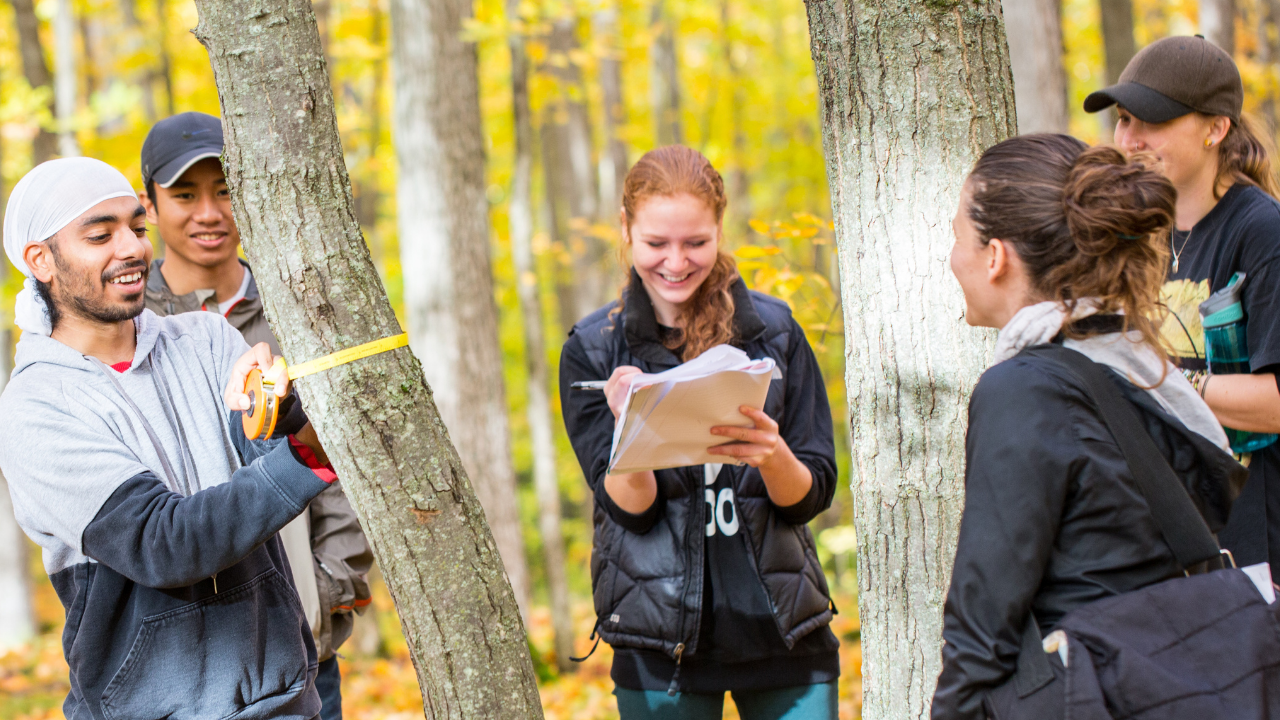Momentous Advancements for Healthier Ecosystems & Hands-on Learning
TD Bank gift helps fund ecologist for best practice approach to enhancing natural spaces and wildlife habitats in the 868-acre University Green Network on Trent’s Symons Campus.
 Trent University has received $350,000 from TD Bank Group (TD) to implement environmental enhancement projects in the new University Green Network (UGN), a key component of the Trent Lands and Nature Areas Plan, which features a commitment to maintain 60 per cent of the Symons Campus in Peterborough as nature areas and green space.
Trent University has received $350,000 from TD Bank Group (TD) to implement environmental enhancement projects in the new University Green Network (UGN), a key component of the Trent Lands and Nature Areas Plan, which features a commitment to maintain 60 per cent of the Symons Campus in Peterborough as nature areas and green space.
“The Trent Symons Campus Lands are a precious asset, rich in natural and cultural heritage, vital to the resilience of Trent and our communities,” says Jennifer Clinesmith, director of Campus Planning & Development at Trent University. “We are thankful that this generous grant supports our plan to be an active caretaker for a valuable ecosystem, while prioritizing teaching and research on the land and encouraging all to appreciate and engage with nature. Our goal is to demonstrate best practices taught in the classroom through active stewardship of our beautiful natural environment.”
The University Green Network prioritizes engaging students in hands-on learning as well as collaborations with Michi Saagiig First Nations and a variety of local community organizations.
The grant, given over three years, will help advance environmental stewardship of the UGN – a large and connected 868-acre system on Trent’s Peterborough campus that includes diverse habitats, wildlife corridors, productive landscapes and diverse green spaces that support ecological function and biodiversity. Stewardship efforts will be guided by the Trent Lands and Nature Areas Plan, which was approved earlier this year.
The grant will help fund an ecologist to lead creation of the UGN Systems-Level Plan – a best practice planning approach to take a landscape-level view and identify composition and relative representation of habitat types across the UGN. The plan will identify priorities for restoration and enhancement of the natural environment, as well as innovative and actionable opportunities to bring ecologically regenerative elements into the campus. Implementing the System-Level Plan recommendations will involve students, Michi Saagiig First Nations, and organizations including Camp Kawartha and Peterborough Green-Up.
Trent University is renowned as a leader in the study of Indigenous Peoples, where Indigenous knowledge is respected and recognized as a valid means by which to understand the world. Trent has deep roots in this field, dating back 50 years to its beginnings. Sherry Booth, associate vice president of Philanthropy and Alumni Engagement at Trent, says the process of reconciliation is ongoing, and Mr. Reid’s generous gift is a shining example of how one person can make a lasting impact.
Expected actions include creating a meadowland bird habitat, removing invasive species, creating nesting mounds for Blanding's turtles (a species at risk) and creating new natural spaces within the campus.
Educational signage, featuring western and Indigenous knowledge about flora and fauna, will be installed alongside trails and walkways. Interpretive signage will also be installed throughout the UGN to support learning about natural features, including Indigenous Traditional Knowledge about species of interest and concern to Indigenous peoples.
"At TD, we believe that creating a vibrant planet and healthy environment is foundational to feeling confident about our collective futures,” says Carolyn Scotchmer, executive director of TD Friends of the Environment Foundation. "That’s why we are dedicated to developing, enhancing and protecting natural spaces across Canada including the Trent University campus lands. These enhancement projects will help create environmental benefits for the local Trent community, as well as health and social benefits."
Trent’s new ecologist will liaise with the Nature Areas Stewardship Advisory Committee, School of the Environment faculty, Indigenous Environmental Studies and Biology departments, and a variety of Master’s programs to embed the UGN Stewardship Plan actions into coursework. The ecologist will also liaise with local First Nations to engage Indigenous youth in the work.
“For the past three years, Elders, Knowledge Holders and Consultation Liaisons from Curve Lake have participated in the creation of the Trent Lands and Nature Areas Plan,” says Chief Emily Whetung of Curve Lake First Nation. “Through this ongoing engagement, we have ensured that Indigenous Traditional Knowledge has an active role in guiding the relationship the University has with the land. This ongoing collaboration presents an opportunity to showcase the positive relationship between public institutions and First Nations."
About the Trent Lands and Nature Areas Plan
Approved by the Board of Governors in February 2021, the Trent Lands and Nature Areas Plan was a three-year endeavour that culminated in a framework for the evolution of the Symons Campus. The Plan advances the University's mission as a learning institution, steward of the natural environment, and community anchor. The Plan includes guiding principles, inspirations from around the world, and emerging best practices to achieve an inspiring vision to demonstrate leadership in environmental education and stewardship, and respect for Indigenous Traditional Knowledge. It commits the University to maintain 60% of its lands as Nature Areas and green space and to ensure new buildings meet high environmental standards. Trent’s Symons Campus represents a substantial portion of the City of Peterborough’s woodlands and wetlands, and many enjoy trails and wildlife in its 11 nature areas. The Plan introduces a University Green Network to connect these Nature Areas and greenspaces across the campus and provide a robust network of rich and biodiverse natural features. Access the Trent Land and Nature Areas Plan at trentu.ca/trentlandsplan.